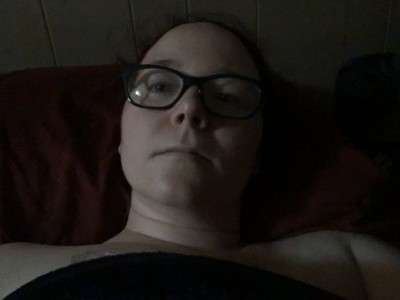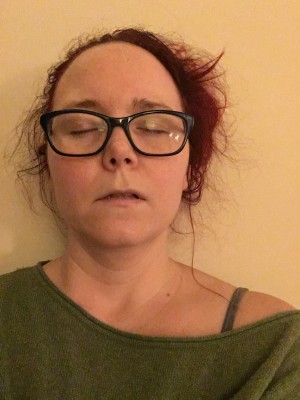The Provider Primer Series: Relevance of mast cells in common health scenarios
| Symptom | Cough |
| Role of mast cells | Several mast cell mediators contribute to airway inflammation and subsequent symptoms including cough:
• Histamine promotes bronchoconstriction, excessive production of mucus, and airway edema.[i] • Prostaglandin D2 promotes bronchoconstriction, mucus production, and airway edema.[i] • Leukotrienes C4 and D4 and chymase also contribute to mucus production and airway edema.[i] • Tryptase promotes overall increased reactivity of the airway.[i] Chronic airway inflammation, as in asthma, is sometimes associated with increased mast cell population in pulmonary tissues.[i] Mast cells remain activated in inflamed airways.[i] |
| Impact of condition on mast cells | Mast cell activation can occur as a result of the physical stimuli such as coughing[ii].
Pain can trigger mast cell activation[iii]. |
| Notes regarding condition treatment | Dextromethorphan can trigger mast cell degranulation[iv].
Codeine and derivatives can trigger mast cell degranulation[v]. Beta-2 adrenergic agonists, inhaled and oral steroids, and inhaled cromolyn are frequently used in mast cell patients[vi]. |
| Notes regarding mast cell treatment | Antihistamines, leukotriene receptor antagonists, and COX inhibitors are routinely taken by mast cell patients and can provide relief.[vii]
Racemic epinephrine can provide relief of pulmonary symptoms.[viii] |
| Special considerations for mast cell patients | Chronic dry, unproductive cough sometimes occurs in mast cell patients.[ix]
Mast cell patients frequently have reactive airways.[ix] Mast cells can produce and release prostaglandin E2, a mediator that participates in asthmatic inflammation and cough[x]. Prostaglandin E2 can also downregulate or promote mast cell degranulation via binding at prostaglandin E2 receptors on mast cell surface[x]. |
| Symptom | Sore throat |
| Role of mast cells | Pain can trigger mast cell activation.[iii] |
| Impact of condition on mast cells | Mast cell driven nasal congestion can result in postnasal drip can irritate the throat.[ix]
Mast cell irritation of the throat can present similarly to infection by Streptococcus spp. or other pathogen. Cultures should be taken to properly evaluate for infection.[ix] Viral, bacterial and fungal infection will activate mast cells through toll like receptors and through perpetuated inflammatory signaling.[xiii] |
| Notes regarding condition treatment | Acetaminophen is recommended for pain relief in mast cell patients.[iv] |
| Notes regarding mast cell treatment | Antihistamines and COX inhibitors are routinely taken by mast cell patients and can provide relief.[vi] |
| Special considerations for mast cell patients | Angioedema of the throat driven by mast cell disease is always a consideration in mast cell patients. If angioedema secondary to mast cell disease impinges upon airway, epinephrine and subsequent anaphylaxis treatments should be undertaken.[vii]
Oral allergy syndrome should be considered.[ix] |
| Symptom | Rash |
| Role of mast cells | Acute urticaria is usually driven by mast cell and basophil activation through IgE or non-IgE pathways.[xi]
Mast cell mediators histamine, leukotrienes and platelet activating factor contribute to itching.[xii] |
| Impact of condition on mast cells | Viral, bacterial and fungal infection will activate mast cells via toll like receptors and perpetuated inflammatory signaling.[xiii]
Non-mast cell driven conditions causing skin rashes can irritate mast cells in the skin.[xii] Pain can trigger mast cell activation.[iii] |
| Notes regarding condition treatment | Some -azole antifungals can induce mast cell degranulation.[xiv] |
| Notes regarding mast cell treatment | Antihistamines and steroids, topical or systemic, and topical cromolyn can provide relief.[xii] |
| Special considerations for mast cell patients | Mediator release by activated mast cells can produce systemic symptoms.[x]
In patients with a history of mast cell disease, mastocytosis in the skin should be considered. o Cutaneous mastocytosis accounts for approximately 90% of mastocytosis cases.[xii] o Cutaneous mastocytosis lesions demonstrate Darier’s sign, a wheal and flare reaction to touch.[xii] o A skin biopsy is necessary to confirm a diagnosis of cutaneous mastocytosis.[xii] o Patients with adult onset cutaneous mast cell lesions are usually later found to have systemic mastocytosis.[xii] |
| Symptom | Fever |
| Role of mast cells | Mast cells can produce prostaglandin E2.[x]
Mast cells can produce and release several pyrogens, including IL-1α, IL-1β, IL-6, IL-8, TNF, interferon-α, interferon-β, and interferon-γ.[x] |
| Impact of condition on mast cells | Prostaglandin E2 can also downregulate or promote mast cell degranulation via binding at prostaglandin E2 receptors on mast cell surface.[x]
Pain can trigger mast cell activation.[iii] Viral, bacterial and fungal infection will activate mast cells via toll like receptors and perpetuated inflammatory signaling.[xiii] |
| Notes regarding condition treatment | NSAIDS can trigger mast cell degranulation. Some mast cell patients are unable to take them.[xv]
Acetaminophen is generally recommended for use in mast cell patients.[iv] |
| Notes regarding mast cell treatment | COX inhibitors are routinely taken by mast cell patients and may provide relief.[vi] |
| Special considerations for mast cell patients |
| Symptom | Earache |
| Role of mast cells | Mast cells are involved in the transmission of pain stimuli, including nerve pain.[iii]
Mast cells are involved in sensorineural hearing loss and tinnitus.[ix] |
| Impact of condition on mast cells | Pain can trigger mast cell activation.[iii]
Viral, bacterial and fungal infection will activate mast cells via toll like receptors and perpetuated inflammatory signaling.[xiii] |
| Notes regarding condition treatment | NSAIDS can trigger mast cell degranulation. Some mast cell patients are unable to take them.[xv]
Acetaminophen is generally recommended for use in mast cell patients.[iv] Steroids (local and systemic) can stabilize mast cells.[vi] |
| Notes regarding mast cell treatment | COX inhibitors are routinely taken by mast cell patients and may provide relief.[vi]
Antihistamines can provide relief for vestibular symptoms.[vi] |
| Special considerations for mast cell patients | Hearing loss, tinnitus and hyperacusis sometimes occur in mast cell patients.[ix]
Sensorineural hearing loss of unknown origin has been documented in mast cell patients.[ix] Some mast cell patients also have Ehlers Danlos Syndrome which can cause conductive hearing loss.[ix] Mast cell disease can also cause auditory processing disorder.[ix] Red ears are a common sign of mast cell activation. Sometimes, only one ear is affected.[ix] |
| Symptom | Stomachache |
| Role of mast cells | Mast cells are commonly found in the GI tract.[xvi]
Mast cell activation is involved in a number of GI conditions, including inflammatory bowel disease, ulcerative colitis and food allergies.[xvi] Mast cell activation can cause chronic diarrhea, pseudoobstruction, obstruction, dysmotility, constipation, nausea, vomiting, and visceral GI pain.[xvi] |
| Impact of condition on mast cells | GI inflammation can recruit mast cells to inflamed tissues.[xvi]
GI inflammation can trigger mast cell mediator release.[xvi] Pain can trigger mast cell activation.[iii] Viral, bacterial and fungal infection will activate mast cells via toll like receptors and perpetuated inflammatory signaling.[xiii] |
| Notes regarding condition treatment | |
| Notes regarding mast cell treatment | Histamine H2 blockers and PPIs are commonly taken by mast cell patients and can provide relief.[vi] |
| Special considerations for mast cell patients | Mast cell patients can experience a wide array of severe GI symptoms with or without dense infiltration of GI tract by mast cells.[ix] |
[i] Cruse G, Bradding P. (2016). Mast cells in airway diseases and interstitial lung disease. European Journal of Pharmacology 778, 125-138.
[ii] Zhang D, et al. (2012). Mast-cell degranulation induced by physical stimuli involves the activation of transient receptor-potential channel TRPV2. Physiol Res, 61(1):113-124.
[iii] Chatterjea D, Martinov T. (2015). Mast cells: versatile gatekeepers of pain. Mol Immunol, 63(1),38-44.
[iv] Dewachter P, et al. (2014). Perioperative management of patients with mastocytosis. Anesthesiology, 120, 753-759.
[v] Brockow K, Bonadonna P. (2012). Drug allergy in mast cell disease. Curr Opin Allergy Clin Immunol, 12, 354-360.
[vi] Molderings GJ, et al. (2016). Pharmacological treatment options for mast cell activation disease. Naunyn-Schmiedeberg’s Arch Pharmol, 389:671.
[vii] Molderings GJ, et al. Mast cell activation disease: a concise, practical guide to diagnostic workup and therapeutic options. J Hematol Oncol 2011; 4 (10).
[viii] Walsh P, et al. (2008). Comparison of nebulized epinephrine to albuterol in bronchiolitis. Acad Emerg Med, 15(4):305-313.
[ix] Afrin LB. (2013). Diagnosis, presentation and management of mast cell activation syndrome. Mast cells.
[x] Theoharides TC, et al. (2012). Mast cells and inflammation. Biochimica et Biophysica Acta (BBA) – Molecular Basis of Disease, 1822(1), 21-33.
[xi] Bernstein JA, et al. (2014). The diagnosis and management of acute and chronic urticaria: 2014 update. J Allergy Clin Immunol, 133(5):1270-1277.
[xii] Hartmann K, et al. (2016). Cutaneous manifestations in patients with mastocytosis: consensus report of the European Competence Network on Mastocytosis; the American Academy of Allergy, Asthma and Immunology; and the European Academy of Allergology and Clinical Immunology. Journal of Allergy and Clinical Immunology, 137(1):35-45.
[xiii] Sandig H, Bulfone-Paul S. (2012). TLR signaling in mast cells: common and unique features. Front Immunol, 3;185.
[xiv] Toyoguchi T, et al. (2000). Histamine release induced by antimicrobial agents and effects of antimicrobial agents on vancomycin-induced histamine release from rat peritoneal mast cells. Pharm Pharmacol, 52(3), 327-331.
[xv] Grosman N. (2007). Comparison of the influence of NSAIDs with different COX-selectivity on histamine release from mast cells isolated from naïve and sensitized rats. International Immunopharmacology, 7(4), 532-540.
[xvi] Ramsay DB, et al. (2010). Mast cells in gastrointestinal disease. Gastroenterology & Hepatology, 6(12): 772-777.

